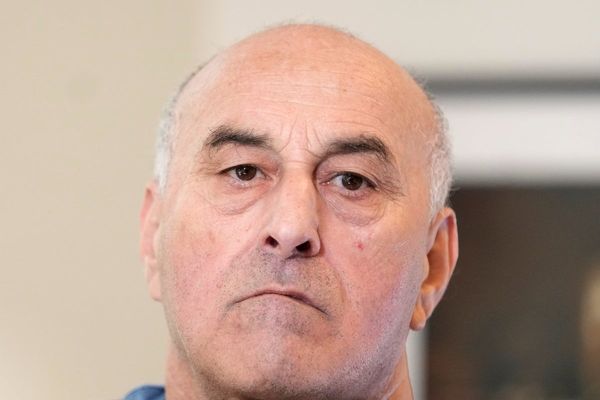The Employees’ Provident Fund Organisation (EPFO)’s recent clarification on the implementation of the 2022 Supreme Court verdict on higher Provident Fund (PF) pension seems to have added to the woes of pensioners and PF members.
The EPFO, the administering body for the Employees’ Pension Scheme (EPS) of 1995, has issued the clarification in the form of frequently asked questions to enable proper implementation of the Court’s judgment. As a matter of principle, the Court had approved the payment of higher pension subject to certain conditions. It upheld the 2014 amendments where the pensionable salary cap was raised to ₹15,000 a month from ₹6,500 a month; employers were allowed to contribute 8.33% of the employees’ actual pay (even if it exceeds the cap) towards EPS; and the basis for computation of pensionable salary was altered. Later, the EPFO came up with two sets of procedures — one for those who retired before September 1, 2014 (the date of effect of amendments), and one for those who retired after 2014.
Also Read: One year after Supreme Court verdict, EPFO releases FAQs for implementing higher pension
Issues in pension computation
In the most contentious matter of pension computation, the clarification, which states that pension will be calculated as per paragraph 12 of the EPS, also says that the date of commencement of pension will determine the applicable formula for calculation of pensionable service, pensionable salary, and pension. This has raised the eyebrows of the pensioners and PF members, as there is no reference to “the date of commencement of pension” in paragraph 2(xv), which deals with pensionable service, or in paragraph 10, which defines pensionable service, or in paragraph 11, which determines pensionable salary.
Going by the yardstick of the date of commencement of pension, the pre-2014 retirees who chose to get their pension coincidentally after the amendments get a lower pension as their pensionable salary has been worked out based on the average pay of 60 months preceding the date of exit from the pension fund. In fact, this is one of the illustrations given in the clarification. Had they opted for pension before the amendments came into effect, their pension would have been higher, as it would be based on the average pay of 12 months. Those who expected the clarification to redress their grievance are frustrated. The clarification is also silent on when the EPFO will start disbursing higher PF pension, as there are reports of some pensioners getting a higher amount. Post-2014 retirees, who are apparently getting a higher amount, feel that there is ambiguity about the revised pension. They want a worksheet as they find that the amount they received does not match the model formula circulated by the EPFO of taking 60 months average pensionable salary.
Also Read: All employees can opt for EPFO pension scheme: Supreme Court
Besides, illustrations carried in the clarification with regard to the calculation of pension for post-2014 retirees could have been simpler. They do not explain every crucial aspect concerning pension. The clarification is also silent on when the EPFO will start disbursing higher PF pension, as there are reports of some pensioners getting a higher amount. There is also a demand for incorporating the component of interest rate, announced by the EPFO from time to time, at the time of calculating pension. As MP (Rajya Sabha) M. Shanmugam of the DMK said, if the interest component is taken into account, the pension amount would at least see a rise of ₹2,300 per month. There is also no logic behind halving the original amount of pension at the time of making widow or widower pension.
There has been a long-standing demand for increasing the amount of minimum monthly pension beyond the present ₹ 1,000, which has been in force since the 2014 amendments. The amount should at least be increased to ₹3,000, which was what the Bharatiya Janata Party demanded when it was in the Opposition in January 2014. The party had also demanded that the pension be linked to the cost of living index, which is again missing in the EPS. But in March 2022, the BJP-led government informed the Rajya Sabha that the High Empowered Monitoring Committee had stated that doing this was “not feasible in view of actuarial position.” At present, the government’s contributions — around ₹8,715 crore for 2022-23 — are in two forms: the government pays 1.16% of the wages of up to ₹15,000 a month as subsidy for contribution towards EPS and additional budgetary support to ensure payment of the minimum monthly pension of ₹1,000 in respect of those who would otherwise be getting less. The government should increase its budgetary allocation, if not double it, to achieve a durable social security system for those who contribute heavily to the economy.
Also Read: Explained | A breakdown of the higher pension scheme
A fresh look
Also, there is no justification for the authorities to entertain any longer the apprehension of the corpus of the Pension Fund under the EPS getting eroded, if what the government conveyed to the Upper House in August 2023 is of any indication. The total annual contributions and the corpus balance stood at about ₹64.886 crore and ₹7.8 lakh crore, respectively, in 2022-23 against ₹42,376 crore and ₹3.94 lakh crore, respectively, in 2017-18. This has been attributed to growth in the membership as well as general increase in wages. Besides, the EPFO should be getting considerable returns, if not more, from its annual investment in exchange-traded funds too.
The government would do well to devise a system that addresses these concerns.







